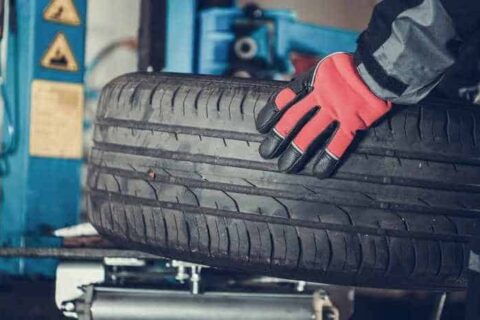We offer a full range of garage services to vehicle owners in Twin city area. Our professionals know how to handle a wide range of car services. Whether you drive a passenger car or medium sized truck or SUV, our mechanics strive to ensure that your vehicle will be performing at its best before leaving our car shop. We can help you with everything from an oil change to an engine change. We can handle any problem on both foreign and domestic vehicles.
TIRE AND WHEEL SERVICES
SERVICE OVERVIEW
Our professionals know how to handle a wide range of car services. Whether you drive a passenger car or medium sized truck or SUV, our mechanics strive to ensure that your vehicle will be performing at its best.
Below are some of the tire services that we offer:
Wheel Alignment (Featuring our brand new state-of-the-art Computerized Camera Alignment System)
– Tire Mounting
– Tire Balancing
– Tire Rotation
– Tire Inspection
– Flat Repair
Tire Guide and Tips: Understanding Your Tire
For example, the number may read P225/70-R15, 89H:
P = Passenger Tire (LT = Light Truck)
– 225 = Overall width of the tire in millimeters
– 70 = Sidewall height (distance from rim to tread) as a percentage of the tread width (known as aspect ratio)
– R = Tire construction, this one is Radial (also, B = Belted Bias, D = Diagonal Bias
– 15 = Represents the size of the wheel in inches
– In this example, the tire has the number 89H. This is the weight capacity of the tire. However, in most cases, you will not see this heading on the sidewall.
– The V and Z rated tires have excellent dry pavement grip/traction but due to their soft rubber compounds, do not have a long life.
A tread rating indicates how long a tire should last. This figure is written in small letters on the sidewall of your tire. The higher the number, the longer the tire should last. 100 is the basic tread wear rating.
– The traction rating works just like grading – ‘A’ being the best, ‘B’ is good, and ‘C’ is acceptable. This number is also found on the sidewall.
– Temperature ratings work the same – ‘A’ best, ‘B’ good, ‘C’ acceptable. If you drive your car very hard, you want a temperature rating of ‘A’ because a ‘C’ would fail faster under these conditions. Again, look for this number on the sidewall.
WHY CHOOSE US
We offer a full range of garage services to vehicle owners in Twin city area. We can help you with everything from an oil change to an engine change. We can handle any problem on both foreign and domestic vehicles.
- We make auto repair more convenient for you
- We are a friendly and professional group of people
- We handle a wide range of car services
- Same day service for most repairs and maintenance
- We get the job done right — the first time
POPULAR QUESTIONS
-
How important is wheel alignment?
It’s important that wheels and tires are aligned. If they aren’t, you could be damaging your tires and affecting the vehicle’s handling characteristics. If the suspension is out of alignment, there is uneven pressure on the tires that can cause your car to work harder on the tires than it needs to.
-
What are the symptoms of a car that's out of alignment?
– Excessive or uneven tire wear.
– Steering wheel pulls to the left or right.
– Feeling of looseness or wandering.
– Steering wheel vibration or shimmy.
– Steering wheel is not centered when car is moving straight ahead. -
How do tire warranties work?
Depends if it’s USED or NEW
Workmanship and materials warranty. This warranty covers the tires for five to six years from the date of purchase, and protects you from issues or defects that stem from the manufacturing process or materials used to make the tire.

![worn-out-tire[1]](https://affordabletiresllc.com/wp-content/uploads/2015/05/worn-out-tire1-480x320.jpg)
![tires-stacked-up[1]](https://affordabletiresllc.com/wp-content/uploads/2015/05/tires-stacked-up1-1024x576.jpg)

![What-is-the-Difference-Between-Cheap-and-Expensive-Tires-Mechanic-Gloves[1]](https://affordabletiresllc.com/wp-content/uploads/2015/05/What-is-the-Difference-Between-Cheap-and-Expensive-Tires-Mechanic-Gloves1.jpg)